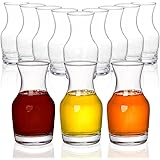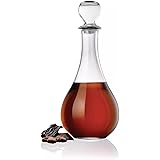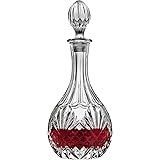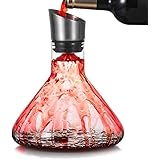Discovering Delicious Reds: Your Beginner’s Guide to Easy-Drinking Wines
Embarking on the journey of wine appreciation can often feel like navigating a complex labyrinth. Many new enthusiasts, after exploring the lighter notes of white wines, often find themselves hesitant when contemplating the vast and sometimes intimidating world of red varietals. The desire to delve into these rich, complex beverages is strong, yet the fear of selecting a wine that is too bold or too dry can certainly hold one back. However, a delightful transition from whites to the world of easy-to-drink red wines is entirely possible, even enjoyable, as illuminated in the insightful video above.This article aims to further demystify red wines for beginners, building upon the foundational knowledge provided in the video. Specific attention will be given to what makes a red wine approachable, discussing key varietals perfect for new palates, and providing context for understanding common wine characteristics. Exploring these accessible options can undoubtedly enrich your wine experience without overwhelming your senses.
The Essence of Red: What Makes a Wine Red?
Before specific recommendations are considered, understanding the fundamental difference in how red wine is produced is quite beneficial. Most people are often surprised to learn that the juice from virtually all wine grapes, regardless of their skin color, begins as clear or white. The distinctive red hue of wine, alongside much of its flavor and structure, is imparted during the fermentation process.
During this crucial stage, the clear grape juice is allowed to ferment in prolonged contact with the grape skins, pulp, seeds, and even stems. These components contain the pigments and compounds responsible for the wine’s color and many of its characteristic flavors and aromas. This skin contact allows for the extraction of tannins, a vital element that plays a significant role in the mouthfeel and aging potential of red wines. Therefore, the duration and method of this contact largely determine the depth of color and the intensity of a particular red wine.
Understanding Tannins: The Key to Approachable Reds
One of the most frequently discussed, yet often misunderstood, components in red wine is tannin. These naturally occurring compounds are primarily found in grape skins, seeds, and stems, as well as in oak barrels used for aging. When tasting a red wine, tannins are largely responsible for the drying sensation or puckering feeling in your mouth, which is often described as astringency.
For individuals just beginning their exploration of red wines, it is generally recommended to start with varietals that exhibit lower tannin levels. Wines with high tannins can sometimes feel harsh or overly dry on an unaccustomed palate, potentially detracting from the overall enjoyment. As a person’s palate develops, the appreciation for wines with more pronounced tannin structures often increases. Therefore, choosing wines with softer, less aggressive tannins creates a more pleasant and welcoming introduction to the category, facilitating an easier transition from white wines.
Pinot Noir: The Quintessential Beginner Red Wine
Among the multitude of red wine varietals, Pinot Noir frequently stands out as an exemplary starting point for beginners. This particular grape is renowned for producing the lightest-bodied of all red wines, a characteristic that makes it incredibly approachable. Its delicate nature and lower tannin content contribute to a smooth and elegant drinking experience, making it a perfect bridge for those transitioning from white wines.
Pinot Noir is an ancient grape, with a history spanning over 2,000 years, predominantly cultivated in France’s Burgundy region. It is important to remember that in Burgundy, wines are typically labeled by their region of origin rather than the grape varietal itself. Thus, if a red wine bottle from Burgundy, France, is encountered, it is almost certainly a Pinot Noir. Beyond France, this cool-climate loving grape flourishes in various other regions globally, including the United States (particularly Oregon’s Willamette Valley, celebrated since 1979 for its world-class Pinots), Italy, New Zealand, and Australia. The flavor profile of Pinot Noir often features bright red fruits like cherry and raspberry, accompanied by subtle earthy or floral notes, creating a nuanced and delightful complexity.
Grenache (Garnacha): Fruit-Forward and Friendly
Moving along the spectrum of approachable red wines, Grenache, known as Garnacha in Spain, presents another excellent option for novices. This varietal yields a darker red wine than Pinot Noir, yet it maintains a soft and easy-to-drink character due to its balanced tannin structure. Grenache wines are particularly appreciated for their vibrant fruit flavors, which tend to be more pronounced than those found in Pinot Noir.
Commonly, tasters will detect notes of ripe red berries such as strawberry and raspberry, often complemented by hints of spice, like white pepper, or even a touch of orange peel. Grenache thrives in warm, dry climates, with significant plantings found in the Southern Rhône Valley of France, throughout Spain, and in parts of Australia. Its inherent fruitiness, combined with a medium body and moderate acidity, ensures a pleasant mouthfeel that avoids any excessive dryness. This makes it a compelling choice for those seeking a step up in richness without a significant increase in tannin intensity.
Tempranillo: Spain’s Ruby Red Gem
Another excellent contender for beginner red wine drinkers is Tempranillo, a grape varietal native to Spain. The name “Tempranillo” itself derives from the Spanish word “temprano,” meaning “early,” referencing the grape’s tendency to ripen sooner than other Spanish varietals. This wine typically showcases a beautiful ruby-red color and offers a more full-bodied experience than Pinot Noir, positioning it as a superb next step in exploring red wines.
Tempranillo is characterized by a delightful spectrum of flavors that often includes plum, cherry, and tomato, sometimes accented by savory notes of leather, tobacco, or even vanilla when aged in oak. Its tannin levels fall squarely in the mid-range, providing a noticeable but generally not overwhelming structure. Notably, many Tempranillo wines also offer exceptional quality without necessitating a high price point, making them incredibly accessible for those just starting their wine journey. Key regions for Tempranillo include Rioja and Ribera del Duero in Spain, where it forms the backbone of many of the country’s most celebrated wines.
Red Blends: Harmony in a Bottle
For those interested in exploring complexity without committing to a single varietal, red blends offer an exciting and often very approachable avenue. These wines are crafted from a combination of several different red grape varietals, carefully selected and blended to achieve a desired balance of flavors, aromas, and textures. The inherent beauty of a red blend lies in its ability to balance the unique characteristics of each grape, often resulting in a wine that is more harmonious and nuanced than a single-varietal offering.
When multiple grapes are combined, the strengths of one varietal can often complement or temper the intensity of another. For instance, a grape known for high acidity might be blended with one prized for its fruitiness, creating a more rounded profile. In the United States, red blends are frequently labeled as such, making them easy to identify. This category spans a wide price range, from very modest to incredibly expensive, ensuring options for every budget. When selecting a red blend, inspecting the label for mentions of grapes you already enjoy can be a useful strategy to find a wine that aligns with your developing preferences.
Beyond the Basics: A Glimpse at the World’s Top Red Wines
As your palate matures and confidence grows, the broader world of red wines offers an even greater array of experiences. For informational purposes, and to provide context for the journey ahead, it is worthwhile to briefly consider some of the world’s most distinguished red wines, organized by their typical tannin levels from highest to lowest. Understanding these differences can further guide your exploration into more robust red wines for beginners and beyond:
- **Nebbiolo (Barolo and Barbaresco):** These are considered among the most tannic red wines, offering floral and tar notes with high acidity, often requiring significant aging.
- **Cabernet Sauvignon:** A full-bodied wine with firm tannins, known for dark fruit flavors like blackcurrant, often accompanied by cedar and tobacco notes.
- **Syrah (Shiraz):** Depending on the region, Syrah can be very tannic, delivering intense dark fruit, black pepper, and sometimes smoky characteristics.
- **Sangiovese (Chianti):** This Italian grape produces wines with mid-to-high tannins and bright acidity, often featuring cherry, herbal, and earthy notes.
- **Tempranillo:** As discussed, this grape presents mid-range tannins, providing a balance of fruit and savory characteristics.
- **Malbec:** Offering softer tannins than many full-bodied reds, Malbec typically showcases dark fruit, plum, and chocolate flavors with a smooth finish.
- **Merlot:** Generally lower in tannins than Cabernet Sauvignon, Merlot is known for its plush texture and flavors of plum, cherry, and sometimes chocolate.
- **Grenache (Garnacha):** A wonderfully fruit-forward wine with low-to-mid tannins, providing a softer, more approachable profile.
- **Pinot Noir:** The lightest in body and lowest in tannins among reds, characterized by delicate red fruit and earthy notes, making it an ideal choice for new red wine drinkers.
For individuals new to the world of red wines, focusing on varietals such as Pinot Noir and Grenache, or exploring well-crafted red blends, will ensure a most enjoyable introduction. These easy-to-drink red wines are specifically chosen for their softer profiles and lower tannin content, facilitating a smooth and pleasant entry into this fascinating category. Continue your exciting journey into the diverse world of wine, always with an open mind and a curious palate.







